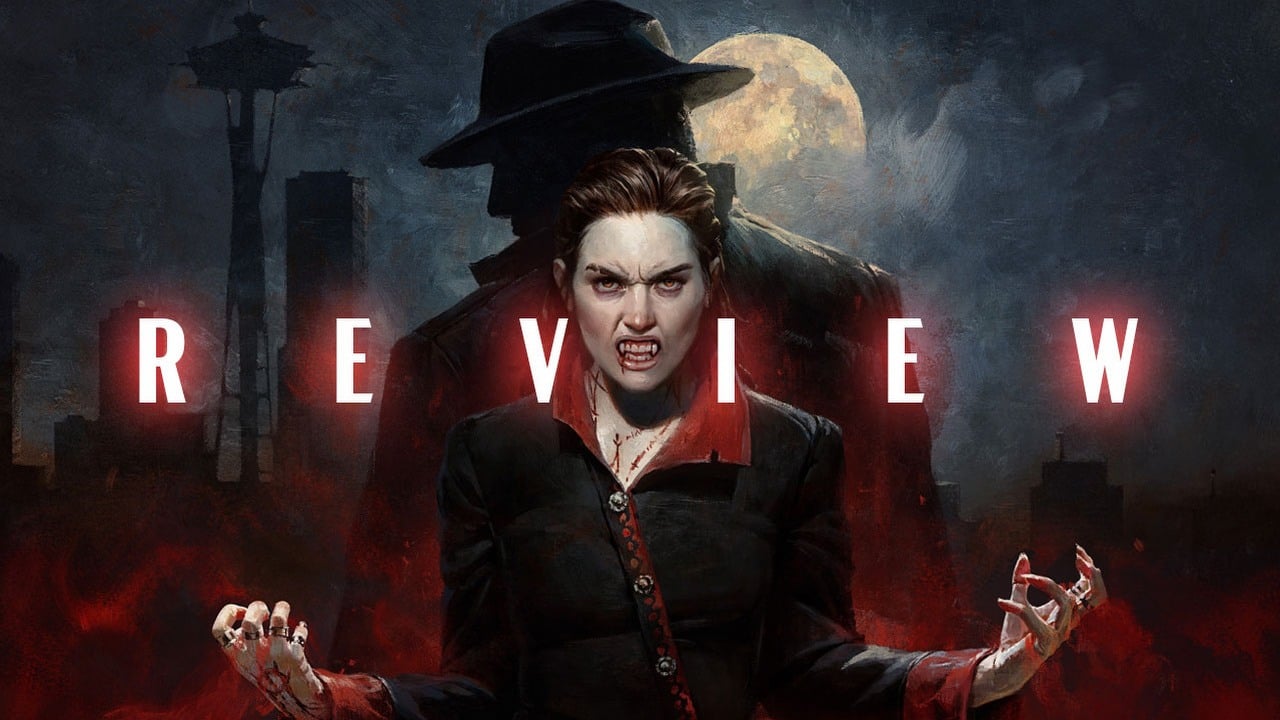
When Vampire: The Masquerade – Bloodlines 2 was first announced, it generated a lot of excitement. Fans had been waiting years for a sequel to a truly unique and captivating game. The original Bloodlines is well-loved by many, and often considered the best video game adaptation of the World of Darkness role-playing game. It left a lasting impression on players, inspiring countless mods, theories, and a dedicated community – and the new sequel promised to recapture that magic.
The development of VTM:B2 was troubled by frequent setbacks, including studio changes, story revisions, and staff reductions, which dampened player excitement. Ultimately, The Chinese Room managed to finish the game, releasing a new entry in the World of Darkness universe. While it’s not a great game – it has numerous flaws – it’s still enjoyable and offers a compelling story.
Two voices in the head are better than one
The game introduces you to two characters: Phyre, an ancient and well-known vampire, and Detective Fabien, who exists within Phyre’s mind. Phyre is already a legend, famous and powerful – people either seek their stories from centuries past or fear their immense power. The story begins as you wake up and discover who Phyre is and how they ended up in Seattle.
You can customize your character in several ways, even though some aspects are set from the start. You’ll be able to choose things like gender, Clan, and appearance, and even shape parts of their backstory through conversations. Some of these choices just change how your character looks, while others affect gameplay, but they all give you a good level of control when creating them.
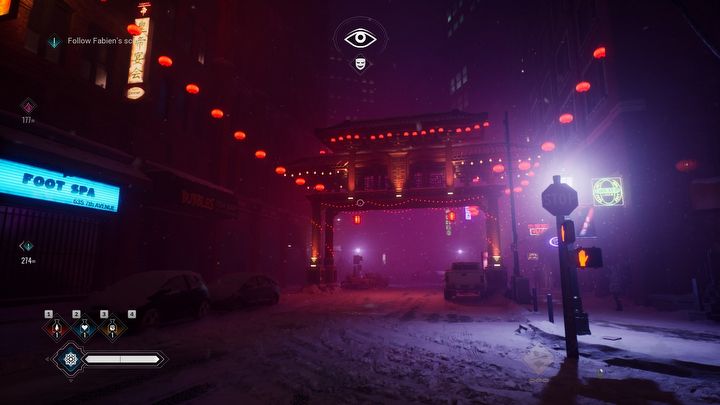
I was initially surprised to play as an older, established vampire. I’m used to starting as a new vampire and learning the world alongside the character, as in previous Vampire games. This time, it was the opposite – I was a powerful, experienced being. However, I quickly found I really enjoyed playing as the Nomad. They’re a complex and fascinating character, and their responses feel authentic to their age and power. The game also lets you choose whether to use cunning manipulation or simply leverage your authority over others. Despite the Nomad being a pre-defined character, these details made them feel like my own.
Throughout the story, Nomad is joined by Fabien, a quirky detective with a unique background. Fabien is a vampire from the Malkavian clan, meaning he struggles with mental instability, and somehow ended up inside Nomad’s mind. Together, they work to figure out why they both have no memories. While Nomad was unconscious, Fabien traveled the world, making him an ideal guide to today’s world and the complicated politics of Seattle. He’s a fascinating character – designed as a classic noir detective – and his madness brings a stylish, often funny, element to the story. He frequently offers his thoughts, makes observations, and asks for our opinion on what’s happening.

The story doesn’t stop with Nomad. Players get to experience the game as the detective Fabien, at two points in his life: when he first became a vampire, and years later, before he became one with Phyre. You’ll follow Fabien and use his special abilities to investigate a long-running mystery that’s been plaguing Seattle.
What are you doing in Seattle, Phyre?
The story starts suddenly, leaving you with a lot of questions. You don’t know who you are, how you got to Seattle, or what the mysterious markings on your body mean. You soon meet Fabien, a helpful and likable detective, and together, after escaping the place you woke up, you venture out into the snowy streets of Seattle to find some answers.
I don’t want to spoil the story, as figuring it out is a big part of what makes the game so good. The developers clearly put a lot of work into crafting a truly captivating narrative, especially for those familiar with the intricate stories of World of Darkness. What’s really clever is how the story unfolds across multiple timelines, letting you piece together clues and connect events. Things you discover in the present often have roots in the past. The plot moves at a great pace, with surprising twists that keep you guessing. I found it incredibly engaging and it easily kept me up late into the night.
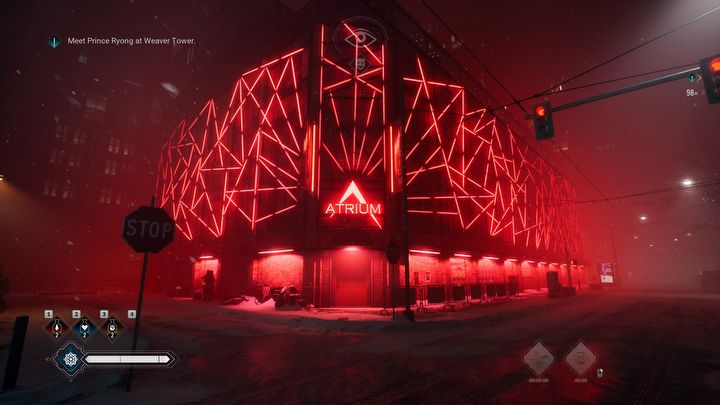
The characters are exceptionally well-acted! Like in VTM:B, there isn’t a huge cast, but each character fits the game’s world and mood perfectly. They’re memorable and interesting, making you want to learn more about them. It’s a shame some don’t get enough time on screen, but the game does let you ask about their backstories and experiences.
How is the world in VTM:B2? And the graphics?
I have complicated feelings about Seattle, which is where the game takes place. The city looks great, and I like how self-contained it feels – similar to the way Kamurocho is in the Yakuza games. This design helps you really learn and appreciate the key locations. Seattle is depicted as a gloomy, snowy city, but it’s also brightened by vibrant neon lights and shop signs, creating a striking contrast that perfectly suits the vampire theme, especially when you’re flying around. The game uses strong contrasts throughout – deeper shadows, more dangerous alleys, thicker fog, and darker nights – making the important buildings really stand out and feel like the center of the action.
While exploring the city in the game, I often felt a sense of emptiness. It quickly became routine to move between buildings without really noticing the people around us, who seemed to be going through the motions. The locations in VTM:B weren’t particularly vibrant either, but I believe the developers had the potential to create a more immersive and ‘living’ city, especially considering today’s technology. Although the city does react a little to changes in the atmosphere, it mostly just feels like more enemies are added to the mix.

The game’s visuals can be inconsistent. Specifically, the user interface feels too basic, and it’s immediately noticeable when you begin playing.
The city can be truly stunning, particularly when lit up with neon or viewed near its landmarks. I was especially impressed by the cathedral – the vibrant colors from the stained glass really popped in the darkness, and the altar was beautifully decorated and lit. The characters look fantastic in the cut-scenes; the dramatic lighting creates a strong atmosphere, and I often paused to take screenshots. The close-up shots of the characters during these scenes were particularly well done.
Okay, so the game looks really good during the story scenes and when you’re focusing on important characters. But honestly, when you just walk around the city and look at regular people, things fall apart a bit. Their faces look kind of weird and plastic-y, and I noticed some textures glitching or just not looking quite right. Plus, after playing for a while, you start seeing the same faces on everyone – enemies, pedestrians, it’s all the same models being reused. The buildings are the same way, especially if you’re running around on rooftops. The graphics aren’t bad, they get the job done, but I kept feeling like it could have been so much more polished, you know? Like something was always just…missing.
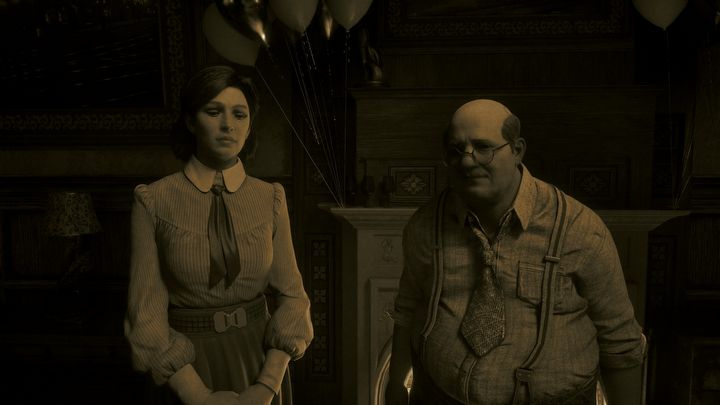
The music is generally good, featuring atmospheric sounds while you explore the world and complete songs in certain areas. Notably, Rik Schaffer, who created the soundtrack for VTM:B, contributed to the composition. While enjoyable, it doesn’t quite reach the same heights as the original game’s soundtrack. I’d love to see more variety in the music, perhaps tracks from different artists or a more distinct, edgy feel that captures the essence of the Vampire universe. It’s possible that the change in music composition over time plays a role, but the new game’s tracks feel a bit softer and could benefit from being darker and more intense.
- Interesting story and plot, as well as well-made characters (designs, voice acting);
- dark atmosphere and mood pouring out of the screen;
- the Nomad/Fabien duo is really great;
- good-looking cut-scenes.
CONS:
- Chaotic combat as the main solution to conflicts, lack of ability to solve tasks in your own way;
- mediocre side quests, and in fact, a lack of “classic” side quests;
- the city feels empty, with cardboard passersby;
- dull UI design;
- simple leveling system;
- lack of soft skills;
- no fast travel and classic save system.
So, what’s it like to be an elder vampire?
Let’s get to the heart of this review: the gameplay. It’s one of the most debated parts of Vampire: The Masquerade – Bloodlines 2, and for good reason – it’s quite inconsistent.
When you start the game, you pick a Clan, which gives you a starting set of abilities, and shapes whether you play with a forceful or cunning style. If you don’t like your initial skills, you can learn new ones from instructors. Unlike the original tabletop game, the abilities themselves are fixed, and you have limited options to customize your character beyond choosing a Clan. This means the skill tree is relatively straightforward.
In this game, you earn blood points by feeding or drinking blood bottles. These points are automatically divided among your different disciplines, unlike in Vampire: The Masquerade – Bloodlines, where you could freely assign them. Also, you can’t use the same discipline ability repeatedly without first replenishing your blood supply – and using more powerful abilities may require feeding multiple times.

Our abilities primarily revolve around fighting and overcoming enemies. We can influence their minds to turn them against each other, use stealth to move unseen, or quickly take them down. The game focuses entirely on resolving issues through combat; there’s no way to talk things out or sneak past opponents unnoticed. If enemies are present, we have to defeat them with force or skill. While there’s a limited element of stealth – choosing which enemy to eliminate first – the game heavily restricts other options. Even trying to cleverly use the environment to distract enemies fails, as obstacles like locked doors appear simply because enemies are nearby.
It’s frustrating to fight, especially because combat isn’t the best part of the game. Even though you play as a powerful vampire, just a few enemies can easily overwhelm and kill you, repeatedly knocking you down. Blocking attacks is difficult and unreliable, often making things worse. While you can dodge endlessly, the lack of a targeting system means you might dodge the wrong way and fall off edges. Improving your special abilities helps a little, but battles aren’t a highlight. It’s particularly annoying when the game sends endless waves of enemies at you.
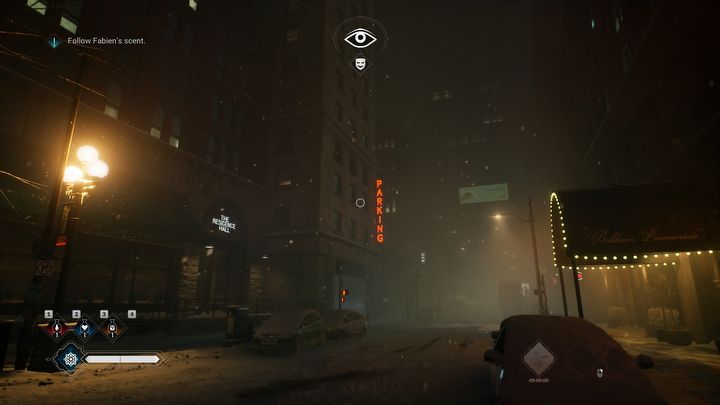
Phyre fights only with their fists and special abilities, not weapons. However, they can use telekinesis to grab enemies or their weapons and turn them against each other, which can be a lifesaver in tough spots.
What I really miss in the game is the ability to use more subtle and social skills. It would be great to be able to tell our vampire apart from a common criminal – instead of just fighting past guards, we could maybe talk our way in. I also wish the game included skills from Vampire: The Masquerade – Bloodlines and the tabletop RPG, like hacking, knowing history, or leading others. These skills could affect not just combat, but also how our character is perceived and interacts with the world.
Gaining experience in the game is simple: you earn points by finishing quests, defeating enemies, or escaping from them. You primarily use these points to learn new abilities, called Disciplines, which you unlock by speaking with instructors. Learning these Disciplines isn’t free, though – it requires blood points with specific emotional resonances (choleric, sanguine, and melancholic) that you get by influencing mortals. You create these emotional states by choosing the right outfit, saying the right thing, or even just pursuing someone who’s already upset. This system is clever because it lets you figure out what kind of clothing or approach will work best on different people, like a businessman versus a gang member.

You earn experience by finishing both story missions and smaller tasks. However, these smaller tasks aren’t really quests in the traditional sense. They mostly involve finding items, fighting enemies, or simply delivering things, and lack any real story or purpose. I was hoping for more, especially since the side quests in Vampire: The Masquerade – Bloodlines were memorable and engaging, but these feel repetitive and uninspired.
The game makes some unusual design choices when it comes to gameplay. It surprisingly lacks features many players expect, like a lock-on system or fast travel. While you can move quickly as the character Phyre – running, double jumping, and gliding across Seattle – these abilities are more minor conveniences than game-changers. A key part of playing as a vampire is maintaining the Masquerade, a secret conspiracy to keep the existence of vampires hidden from humans. You can’t openly use your powers or feed in public, because it would cause widespread panic and ultimately lead to your demise at the hands of other vampires who enforce the rules. However, the game isn’t always consistent with this – I’ve fallen from incredibly high places without anyone noticing. Later in the game, whether you break the Masquerade sometimes feels out of your control, but you still face consequences for doing so.

Honestly, one thing that bothered me was the saving system. It doesn’t really let you save whenever you want – it mostly happens automatically before quests, after conversations, or even just after giving someone food. I’m the kind of player who loves to mess around with dialogue choices, just to see what happens, and I kept accidentally reloading a lot of progress when I wanted to try something different. It also made me a bit anxious about finishing the game, because I didn’t want to lose everything I’d done. As someone who enjoys exploring how characters react, even if I don’t pick the ‘best’ option, it was a little frustrating.
I did run into a few technical problems while playing, but nothing that ruined the experience. Things like falling through the floor, enemies getting stuck in the environment, or incorrect voice acting happened occasionally. These glitches were a little distracting, but they seem like issues that could be easily resolved with a couple of updates.
Final thoughts
What really makes this game stand out is its story and the characters within it. The developers clearly put a lot of effort into creating an immersive world – the World of Darkness is genuinely captivating, and you can tell they enjoyed building it. They did an excellent job, and if I were judging the game on story and characters alone, it would receive a very high score.
The early issues really hold this game back, which is a shame. I found myself rushing through gameplay just to see how the story ended, rather than enjoying the game itself. Still, I’m optimistic, remembering how flawed the first game, VTM:B, was before the modding community improved it. I’m hoping VTM:B2 will follow a similar path – that with fan support over time, it too can become a classic, as the story has a strong foundation. Right now, it’s a decent game worth playing if you’re interested in the narrative, but only at a lower price.
Read More
- ‘M3GAN’ Spin-off ‘SOULM8TE’ Dropped From Release Calendar
- Avengers: Doomsday Trailer Leak Has Made Its Way Online
- They Nest (2000) Movie Review
- bbno$ speaks out after ‘retirement’ from music over internet negativity
- Super Animal Royale: All Mole Transportation Network Locations Guide
- Brent Oil Forecast
- ‘Welcome To Derry’ Star Confirms If Marge’s Son, Richie, Is Named After Her Crush
- Code Vein II PC system requirements revealed
- Spider-Man 4 Trailer Leaks Online, Sony Takes Action
- Beyond Prediction: Bayesian Methods for Smarter Financial Risk Management
2025-11-05 15:06